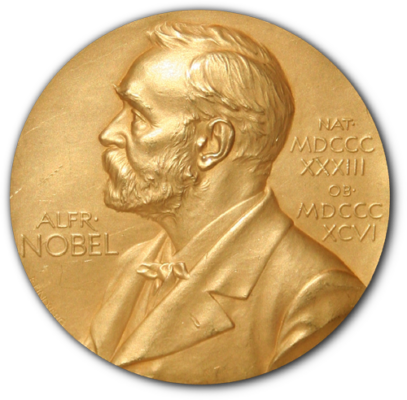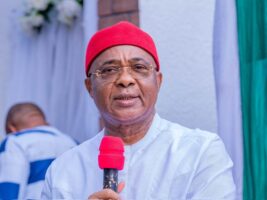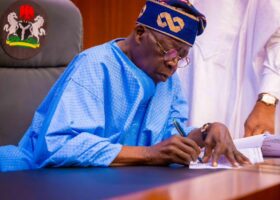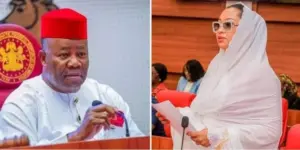The Nobel Prize award in Physiology or Medicine is presented annually by the Nobel Assembly at the Karolinska Institute in recognition of outstanding discoveries in physiology or medicine. The Nobel Prize is not a singular honour, but rather a collection of five separate awards established by Alfred Nobel’s 1895 will. These prestigious prizes are conferred upon individuals who have, in the preceding year, conferred the greatest benefit to humankind in the fields of Physics, Chemistry, Literature, Peace, and Physiology or Medicine.
TVC had earlier reported that the Nobel Assembly at Karolinska Institute has presented a joint award for the 2025 Nobel Prize in Physiology or Medicine to Mary E. Brunkow of the Institute for Systems Biology, Seattle, USA, Fred Ramsdell of Sonoma Biotherapeutics, San Francisco, USA and Shimon Sakaguchi, Osaka University, Osaka, Japan, for their discoveries concerning peripheral immune tolerance.
The body’s powerful immune system must be regulated, or it may attack our own organs. Mary E. Brunkow, Fred Ramsdell and Shimon Sakaguchi are awarded the Nobel Prize in Physiology or Medicine 2025 for their groundbreaking discoveries concerning peripheral immune tolerance that prevents the immune system from harming the body.
In this article, TVC presents recipients of the prestigious Nobel Prize award in Physiology or Medicine since 1960 and their work contributions, as confirmed by the Nobel Prize Assembly.
In 1960, Sir Frank Macfarlane Burnet Australian and Peter Medawar Brazilian born received the Nobel Prize in Medicine “for their discovery of acquired immunological tolerance”.
In 1961, Georg von Békésy received the Nobel Prize in Medicine “for his discoveries of the physical mechanism of stimulation within the cochlea”.
In 1962, Francis Crick, James Watson and Maurice Wilkins received the Nobel Prize in Medicine “for their discoveries concerning the molecular structure of nucleic acids and its significance for information transfer in living material”.
In 1964, Konrad Bloch and Feodor Lynen received the Nobel Prize in Medicine “for their discoveries concerning the mechanism and regulation of the cholesterol and fatty acid metabolism”.
In 1965, François Jacob, André Lwoff and Jacques Monod received the Nobel Prize in Medicine “for their discoveries concerning genetic control of enzyme and virus synthesis”.
In 1992, Edmond H. Fischer and Edwin G. Krebs received the Nobel Prize in Medicine “for their discoveries concerning reversible protein phosphorylation as a biological regulatory mechanism”.
In 1993, Richard J. Roberts and Phillip A. Sharp received the Nobel Prize in Medicine “for their discoveries of split genes”.
In 2000, Arvid Carlsson, Paul Greengard and Eric Kandel received the Nobel Prize in Medicine “for their discoveries concerning signal transduction in the nervous system”.
In 2001, Leland Hartwell, Tim Hunt and Sir Paul Nurse received the Nobel Prize in Medicine “for their discoveries of key regulators of the cell cycle”.
In 2002, Sydney Brenner, H. Robert Horvitz and John E. Sulston received the Nobel Prize in Medicine “for their discoveries concerning genetic regulation of organ development and programmed cell death”.
In 2003, Paul C. Lauterbur and Sir Peter Mansfield received the Nobel Prize in Medicine “for their discoveries concerning magnetic resonance imaging”.
In 2004, Richard Axel and Linda B. Buck received the Nobel Prize in Medicine “for their discoveries of odorant receptors and the organisation of the olfactory system”.
In 2005, Barry J. Marshall and J. Robin Warren received the Nobel Prize in Medicine “for their discovery of the bacterium Helicobacter pylori and its role in gastritis and peptic ulcer disease”.
In 2006, Andrew Z. Fire and Craig C. Mello received the Nobel Prize in Medicine “for their discovery of RNA interference – gene silencing by double-stranded RNA”.
In 2007, Mario R. Capecchi, Sir Martin J. Evans and Oliver Smithies received the Nobel Prize in Medicine “for their discoveries of principles for introducing specific gene modifications in mice by the use of embryonic stem cells”.
Read Also
In 2008, Harald zur Hausen received the Nobel Prize in Medicine “for his discovery of human papilloma viruses causing cervical cancer”. Also in the same year, Françoise Barré-Sinoussi and Luc Montagnier received the Nobel Prize in Medicine “for their discovery of the human immunodeficiency virus”.
In 2009, Elizabeth H. Blackburn, Carol W. Greider and Jack W. Szostak received the Nobel Prize in Medicine “for the discovery of how chromosomes are protected by telomeres and the enzyme telomerase”.
In 2010, Robert G. Edwards received the Nobel Prize in Medicine “for the development of in vitro fertilisation”.
In 2011, Bruce A. Beutler and Jules A. Hoffmann received the Nobel Prize in Medicine “for their discoveries concerning the activation of innate immunity”. Ralph M. Steinman also received the Nobel Prize in Medicine “for his discovery of the dendritic cell and its role in adaptive immunity”.
In 2012, Sir John B. Gurdon and Shinya Yamanaka received the Nobel Prize in Medicine “for the discovery that mature cells can be reprogrammed to become pluripotent”.
In 2013, James E. Rothman, Randy W. Schekman and Thomas C. Südhof received the Nobel Prize in Medicine “for their discoveries of machinery regulating vesicle traffic, a major transport system in our cells”.
In 2014, John O’Keefe, May-Britt Moser and Edvard I. Moser received the Nobel Prize in Medicine “for their discoveries of cells that constitute a positioning system in the brain”.
In 2015, William C. Campbell and Satoshi Ōmura received the Nobel Prize in Medicine “for their discoveries concerning a novel therapy against infections caused by roundworm parasites”. Tu Youyou also received the Nobel Prize in Medicine “for her discoveries concerning a novel therapy against Malaria”.
In 2016, Yoshinori Ohsumi received the Nobel Prize in Medicine “for his discoveries of mechanisms for autophagy”.
In 2017, Jeffrey C. Hall, Michael Rosbash and Michael W. Young received the Nobel Prize in Medicine “for their discoveries of molecular mechanisms controlling the circadian rhythm”.
In 2018, James P. Allison and Tasuku Honjo received the Nobel Prize in Medicine “for their discovery of cancer therapy by inhibition of negative immune regulation”.
In 2019, William G. Kaelin Jr, Sir Peter J. Ratcliffe and Gregg L. Semenza received the Nobel Prize in Medicine “for their discoveries of how cells sense and adapt to oxygen availability”.
In 2020, Harvey J. Alter, Michael Houghton and Charles M. Rice received the Nobel Prize in Medicine “for the discovery of the Hepatitis C virus”.
In 2021, David Julius and Ardem Patapoutian received the Nobel Prize in Medicine “for their discoveries of receptors for temperature and touch”.
In 2022, Svante Pääbo received the Nobel Prize in Medicine “for his discoveries concerning the genomes of extinct hominins and human evolution”.
In 2023, Katalin Karikó and Drew Weissman received the Nobel Prize in Medicine “for their discoveries concerning nucleoside base modifications that enabled the development of effective mRNA vaccines against COVID-19”.
In 2024, Victor Ambros and Gary Ruvkun received the Nobel Prize in Medicine“for the discovery of microRNA and its role in post-transcriptional gene regulation”.
Finally, in the 2025 edition, Mary E. Brunkow, Fred Ramsdell and Shimon Sakaguchi received the Nobel Prize in Medicine“for their discoveries concerning peripheral immune tolerance”.





